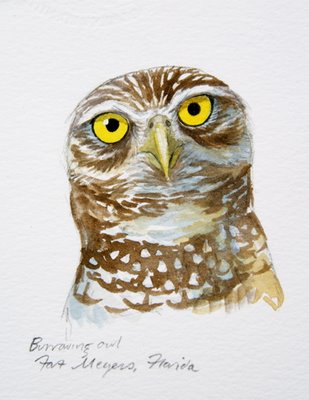
From a life sketch of a burrowing owl in Fort Meyers, Florida. To me, these little birds look perpetually annoyed. They have good reason.
My last morning in Florida. I am agog at Marco Island. It seems there are houses on top of houses here. Each one has a little mown lawn and a palm tree. Lots of them have manatee mailbox holders. Now there's a niche market for you. Wonder what Gene the mailman would have to say about a manatee mailbox holder on Whipple Run? That's a thought.
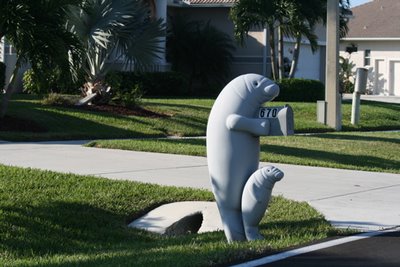
The whole idea of going on a field trip to Marco Island to look at raptors, more specifically burrowing owls, seemed a bit odd. But it was one of the many enticing offerings at the SW Florida Birding Festival. I've seen burrowing owls on the North Dakota coteau region, and sitting on fenceposts in Montana. I've tracked them down in a sprawling Fort Myers subdivision. But Marco Island is so...manicured to the cuticle. So built up. So commercial. So sanitized. I just couldn't imagine any wildlife making a living here. Nancy Richie was about to prove me wrong.
I'd met Nancy at the booksigning the night before. I wish I'd known when I was inscribing her book what I know now. Trained as a marine biologist, she works for the City of Marco Island as an Environmental Specialist. She checks surface water quality and monitors all protected species populations. That includes burrowing owls, bald eagles, osprey, nesting shorebirds, sea turtles, manatees, and gopher tortoises, those hulking heartbreakers that somehow hang on in South Florida. She enforces Federal, State and local rules that protect them. She deals with permits. And she spends much of her time monitoring and protecting burrowing owl nest sites. That's the least of it. Since 1999, she has worked to educate residents and seasonal visitors to Marco Island about these incredible little birds, and why they deserve respect and protection. And she talks to developers, many of whom would rather not hear what she has to say.
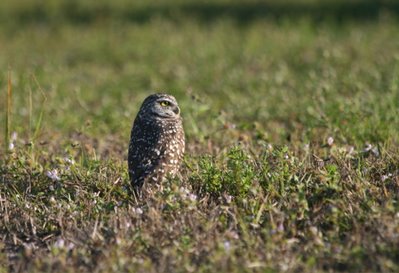
The first thing Nancy did when we met at 8 AM at City Hall was to give us a brief natural history of these diurnal/crepuscular birds, who hand-dig their own burrows in Marco Island's sandy soil. (Elsewhere in the country, they use gopher or prairie dog burrows). Feeding largely on insects, herps, small rodents and some birds, burrowing owls can be seen during the day at the mouth of their burrows, which extend from inches to several feet under the sod, and in which they lay up to a dozen eggs.
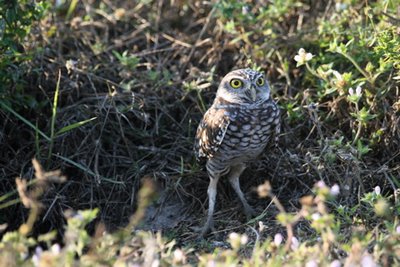
Lesson finished, Nancy handed us each a map, with highlighted X's marking some of the 100 or so burrowing owl nest sites on Marco Island. I stared at the map. 100 burrows! Perhaps 65% of those produce young in a given year, but still! How could this be? Where was the habitat? We carpooled to the nearest site, where two pairs of owls have dug burrows on what constitutes a double house lot. I was stunned. Here they were, carrying on their lives on a perfectly rectangular piece of closely-mown lawn, hemmed in by asphalt and concrete sidewalks on every side.
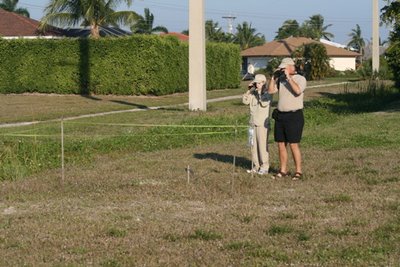
The actual burrows were marked with yellow tape and small wooden posts, and a T-perch had been erected just at the mouth of the burrow. In a subsequent drive around the island, I saw marked burrows on nearly every vacant patch of land I passed.
Though she'd much rather leave them natural, Nancy puts these markers up to prevent lawn-care workers from driving over or collapsing the burrows, and to try to keep people from trampling them or otherwise disturbing the birds. The city stipulates that all vacant lots be mowed; any vegetation over 15" high must go. This manicuring has a negative impact on wildflowers, insects, quail, ground doves, shrikes, kestrels,nighthawks and kildeer. And burrowing owls.
I couldn't believe it when Nancy led us right up to the tape, and we were allowed to peer into the burrow at the beautiful, bright-eyed owls just inside. They glared back at us, as unperturbed as it seems possible for wild owls to be by the sight of twenty humans surrounding their nest site.
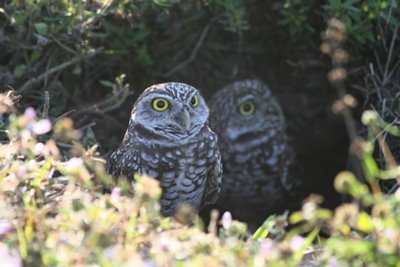
Like many raptors, it's possible to tell the difference between the sexes just by their faces and build. The male, in the foreground, seems smaller-headed and slighter, even longer-legged , than the bulkier female, behind him. Males are also paler, because they get bleached by the sun as they stand guard outside the burrow while the darker female incubates in its cool recesses.
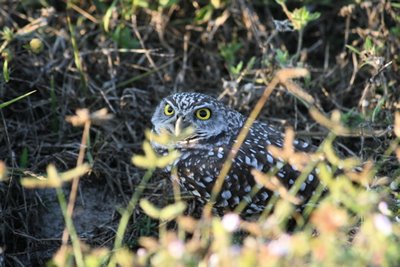
Although it seemed the owls were unafraid, I could feel their tension and read it in their glowing golden eyes. This male crouched when he felt pressed by the crowd, and I suffered with him as each person leaned in over the yellow tape to examine him more closely. When the tension got too great, he'd spring into flight, only to land a couple of yards away. Then, torn by the desire to flee and the need to stay and protect his mate, he'd return. This seemed to me to be a marvel of acclimatization for any bird, much less an owl.
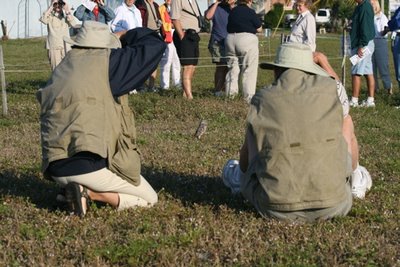
Ironically, the two birders with the longest, most expensive lenses seemed to want to get closest to the little owl. Again and again they crept up on him, and his nervous glares went unnoticed. With the optics they were packing, it seemed to me they must have been trying to photograph the mites on his eyelashes. So tiny he was, so vulnerable, so very brave.
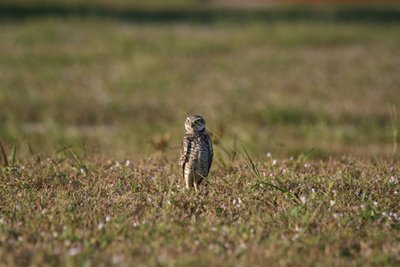
The closer everyone else pressed, the farther away I moved. I looked up at the wires overhead, to find a pair of loggerhead shrikes, witnessing this bizarre scene.
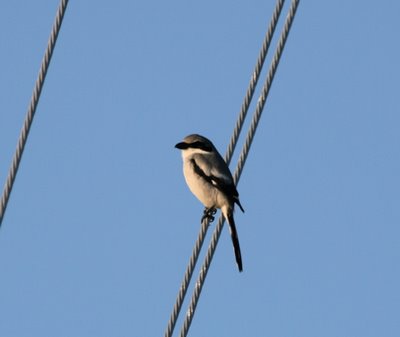
An American kestrel joined them. No one else seemed to notice the shrikes, but they're hanging on by a thread, too. They call these little vacant house lots habitat, and they eke a living in grasshoppers and rodents, Cuban tree frogs and lizards from what little remains. Nancy tells me there are even gopher tortoises persisting on Marco Island. Such riches on these barren little postage stamps of land, all that is left of what must have been magnificent habitat before we overran it.
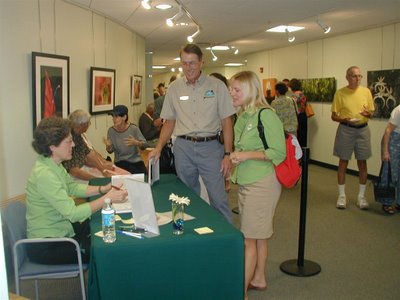 Photo by Susan Merchant
Photo by Susan MerchantThis is Nancy Richie. Listening to her, looking at the handouts she'd prepared, I flashed back to my three years heading up the Least Tern/Piping Plover Recovery Program in Connecticut. This is a woman who has taken it upon herself to protect a vulnerable species. She will stop at nothing to do it. She speaks to developers, who confide in her that the way to deal with burrowing owls is to put a hose on your truck's exhaust pipe and run it down the burrow. She speaks to homeowners who call her hotline to complain about "this awful bird that stares in my bathroom window," asking her to remove it. She works with city maintenance people and lawn care companies, educating employees about proper maintenance around the fragile burrows. And she despairs at the limp regulations the state of Florida has in place, that actually allow developers to collapse nesting burrows as long as the nesting pair is not in residence. As in: During the winter. So the owls come back to nest in February, and their burrow has been destroyed, and there's another McMansion going up where they once raised their young. I was so flabbergasted at this that I asked Nancy to repeat the statement. Yes. You can destroy their burrows as long as the owls aren't actively nesting there at the moment. The wonder is that there are any burrowing owls, gopher tortoises, shrikes and kestrels left here at all.
"Build out," an ominous phrase, is predicted within 10 years. That means that every vacant lot on Marco Island will have a house on it. How do these birds persist on some of the most expensive real estate in the country, in the face of such relentless pressure? Two words: Nancy Richie. Stop and think for a moment how it would feel to take on such a responsibility. To make each owl's fate your problem. To watch new houses being built atop the vanishing vacant lots on this hotly contested bit of sand and beach. To see known nesting burrows legally destroyed that only the spring before put forth wide-eyed mocha-brown owlets. To make cold calls to homeowners, asking them to dig starter burrows, to invite displaced birds to their own yards. To try to counter the inevitable takeover of every bit of free habitat on this jam-packed island. To care that much.
If the owls could hand-pick an ambassador, they couldn't do much better than Nancy Richie. She's the bomb. She likes people, and even the ones she'd privately like to strangle, she befriends. She's got 25 volunteers she calls, collectively, Owl Watch. When an announcement was made that a beach on Marco Island was being considered for designation as a critical habitat for wintering piping plovers, there was a predictable outcry. Almost nobody in a community like this wants to hear that a threatened species might be using their beach (or their lawn, for that matter). A local jeweler began making pendants depicting dead piping plovers, feet in the air, with X's for eyes. Nancy paid him a visit, and from then on the jeweler began making his piping plover pendants right-side-up instead. And he made Nancy a burrowing owl with emerald eyes. That's the kind of effect, the effectiveness, she has. She is the owls' guardian angel. Thank God for people like Nancy, and for these tiny owls that find a way to live cheek to jowl with people, people who, but for her efforts, might put an exhaust pipe down their nesting burrows. You can make people care, but as often as not you have to take the long way around, and gently show them why they should care. Give Nancy a place to stand, and she will move the world.
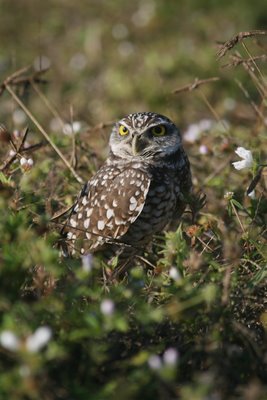
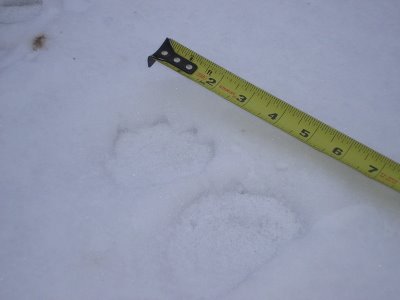
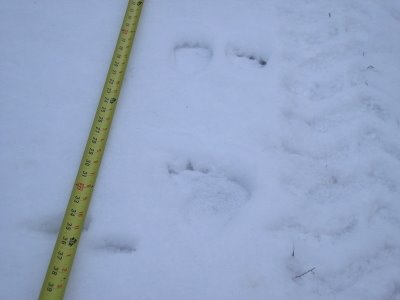
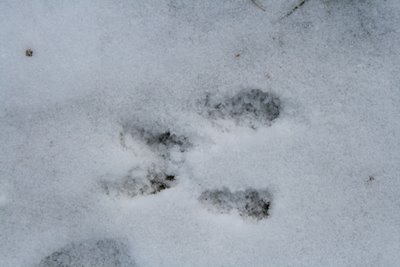 The hind feet are ahead of the front feet, typical of a bounding mammal. Think of the rabbit's exclamation point !! tracks and you can envision what's happening.
The hind feet are ahead of the front feet, typical of a bounding mammal. Think of the rabbit's exclamation point !! tracks and you can envision what's happening.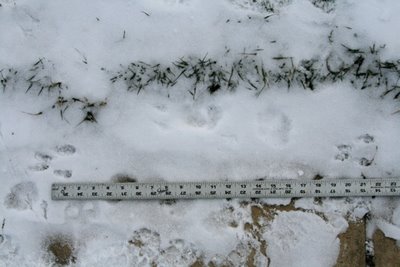 Our front yard is a mishmash of Baker, junco, cardinal, jay, towhee, sparrow, dove, mouse, rabbit and deer prints. I was lucky to notice these in all the background noise.
Our front yard is a mishmash of Baker, junco, cardinal, jay, towhee, sparrow, dove, mouse, rabbit and deer prints. I was lucky to notice these in all the background noise.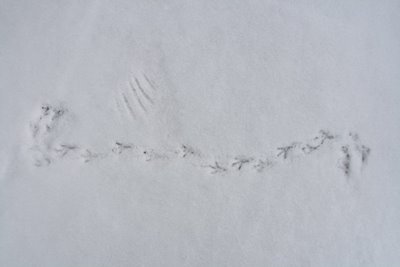
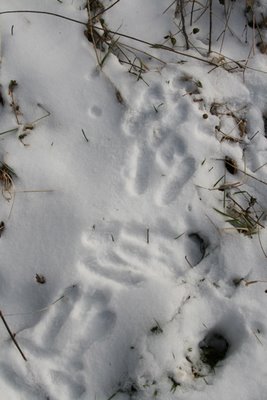
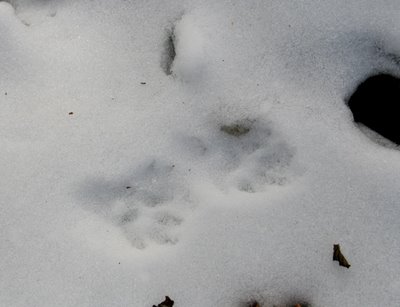
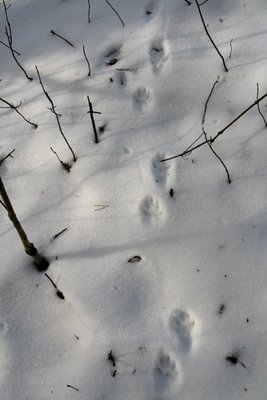
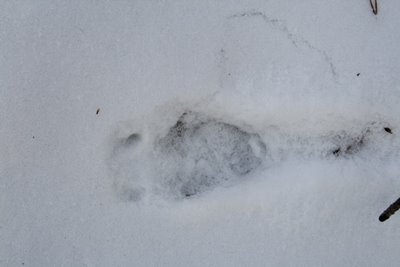
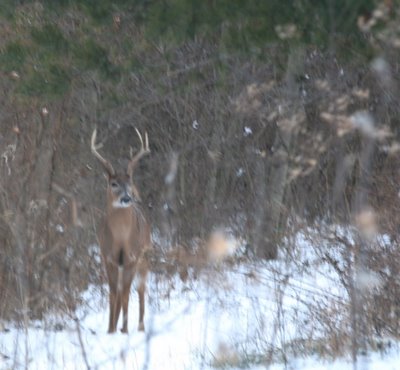
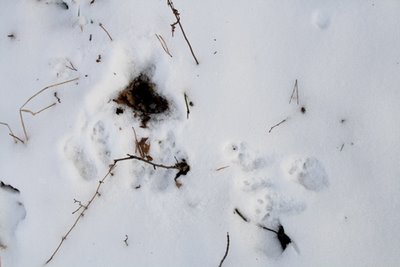
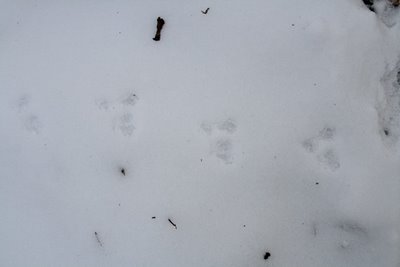
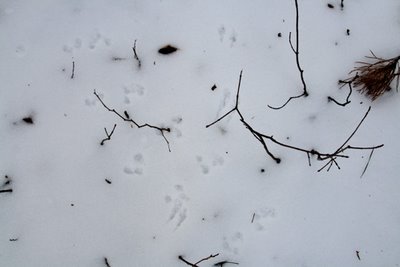

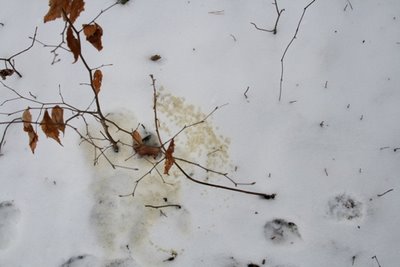
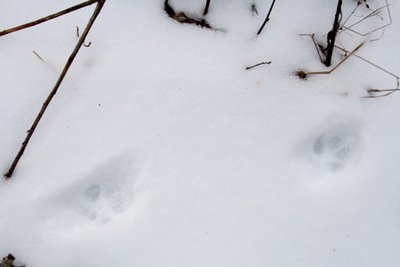
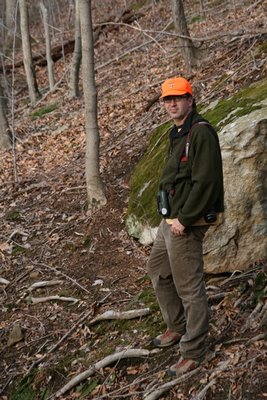

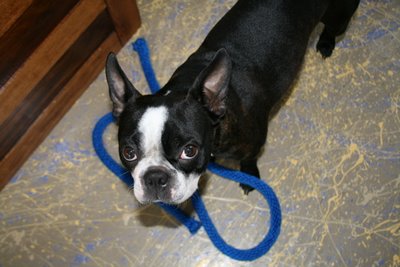
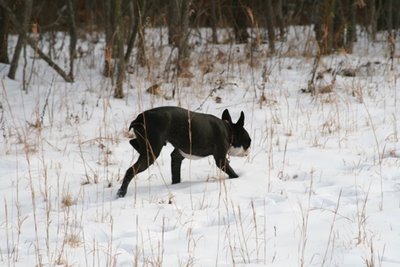
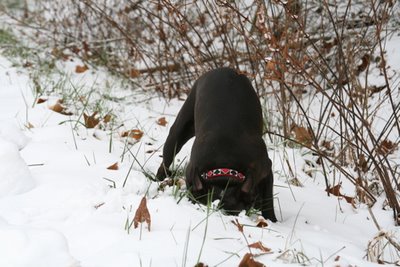
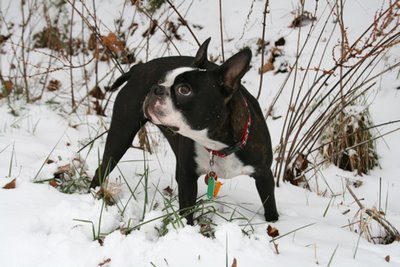
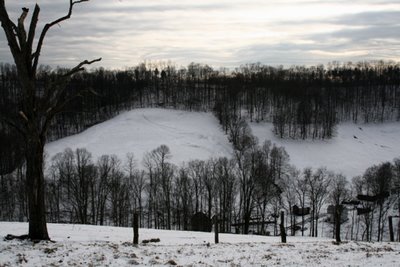
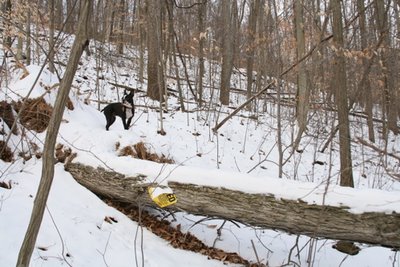
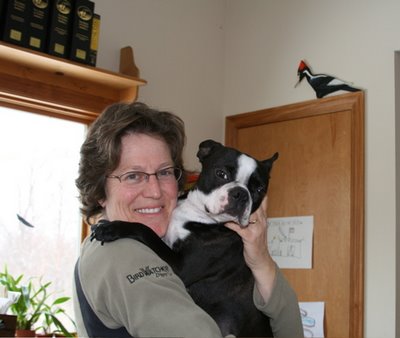
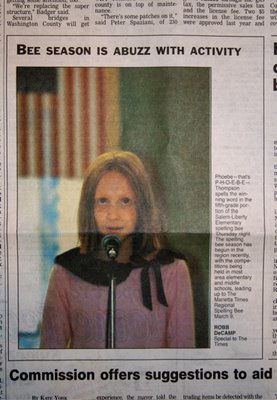
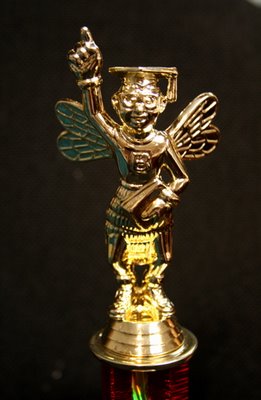












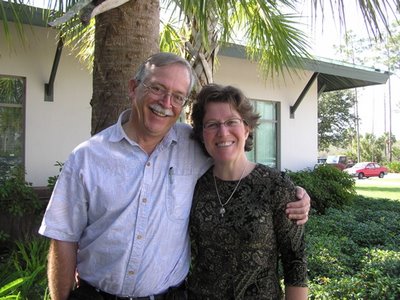
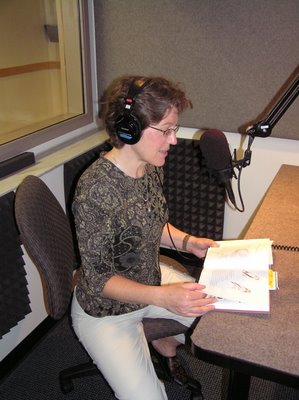

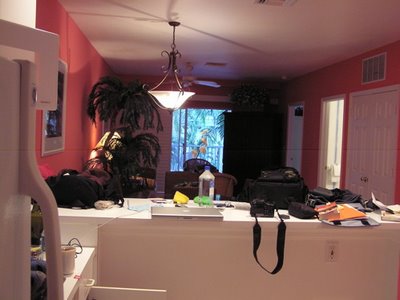
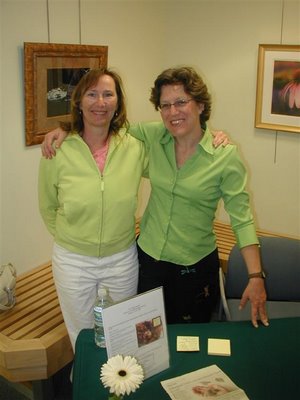
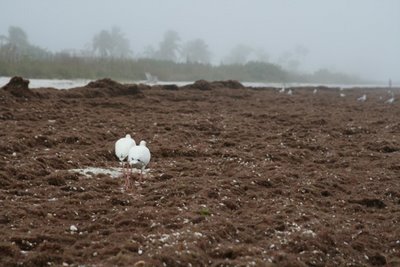
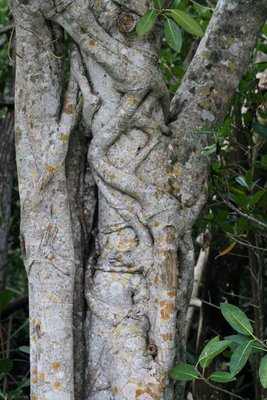
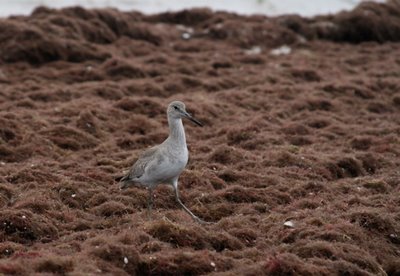
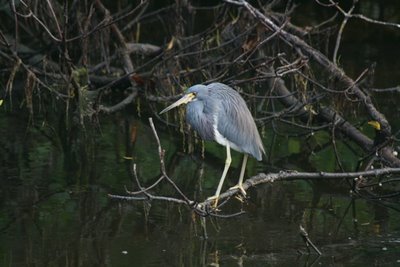
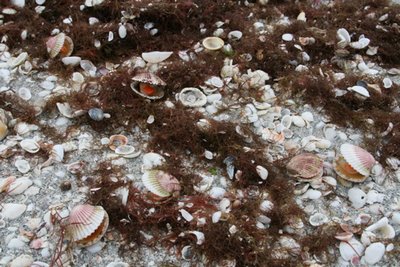
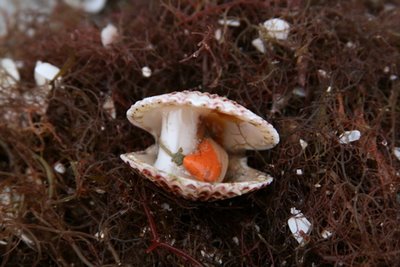
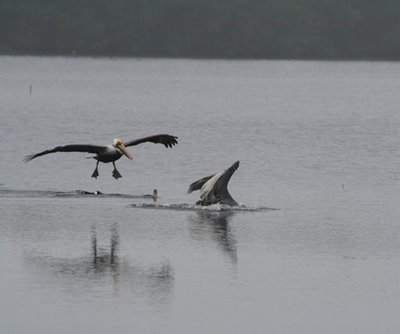
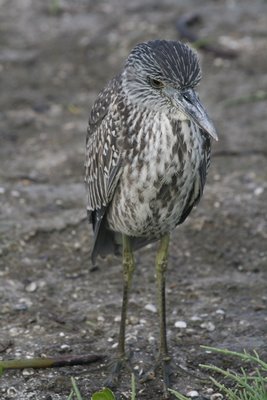
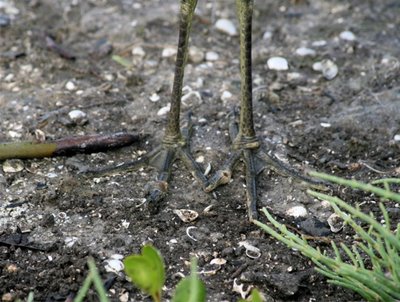
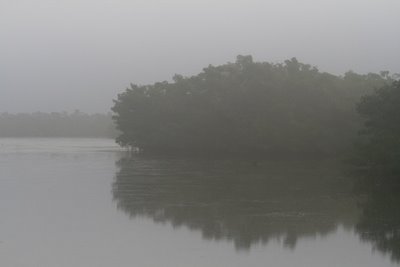
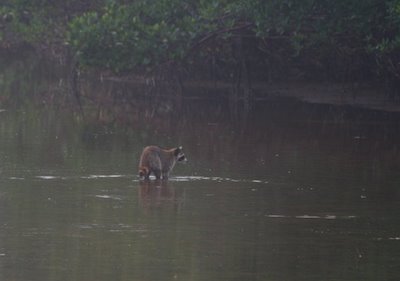
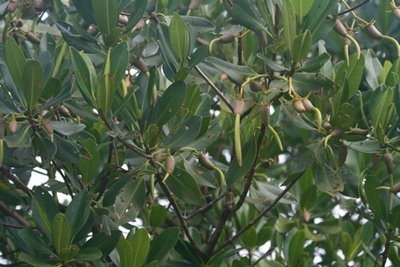
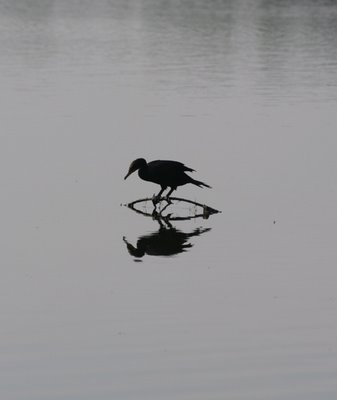







Wednesday, January 31, 2007
1 comments